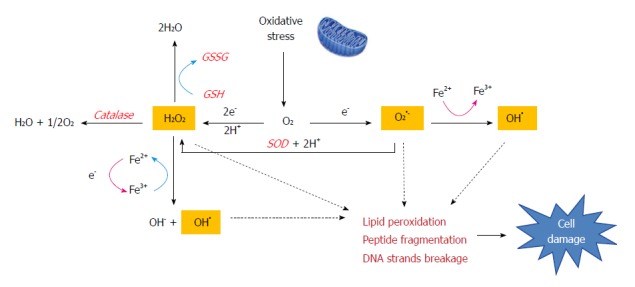Figure 2.

The Fenton reaction in liver disease. Oxidative stress produces large amounts of reactive compounds and cytotoxic free radicals (H2O2, O2•- and OH•). The Fenton reaction generates hydroxyl radicals (OH•) from hydrogen peroxide (H2O2) and superoxide (O2•-) catalyzed by iron. This reaction occurs in cells and free radicals can attack the double bonds of non-saturated phospholipids in cell membranes which eventually degrade the structural integrity of cell membranes, impair enzymatic function and cause cross-linking of proteins or strand breaks in DNA. Cells also have an antioxidant enzyme system (catalase, GSH or SOD) is meant to neutralize free radicals and prevent damage.
